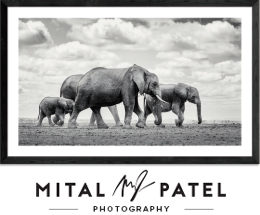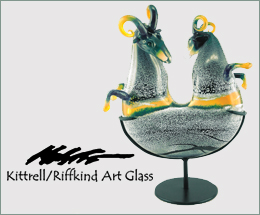
The South Poles are perhaps one of the most serene places on earth. The panoramic ice sheet stretching to the horizon provides a visual blank canvas for the quietude that hovers over the landscape. The frigid atmosphere is virtually silent. That is, except for the penguins.
“Penguins are very noisy,” says nature and wildlife photographer Mital Patel, who earlier this year ventured to Antarctica to photograph the mountainous ice structures found on the world’s southernmost continent. In fact, the tuxedo-clad birds who call the polar region home can make quite a ruckus, he learned.
Patel posted a short video clip of the cacophony from the flightless fowl to his Instagram page upon returning from his two-week adventure in January. Desiring to capture the artistry of Antarctica’s vast frozen landscapes, Patel and his wife had joined a small group of photographers on a special expedition ship, where they also lodged for the duration of their stay. “There isn’t any other way to visit Antarctica unless you are on one of the research bases,” notes Patel, who said he wore multiple layers of clothing, from long underwear to a waterproof outer shell, to keep warm; the temps rarely get above freezing, even in the polar summer.

Although the South Pole is as far off the beaten path as one can be, traveling to remote places is common practice for the intrepid photographer. Over the past 10 years, his work has taken him from the open plains of wildlife preserves in East Africa to the tropical terrain of the Galápagos Islands and the rugged topography of volcanos in Guatemala.
Born in Longview, Texas, to parents of Indian descent, Patel caught the travel bug at a young age. His father worked in the hospitality industry and took his family with him around the world, including frequent trips to his homeland. “We would travel to India quite a bit, with stopovers in different surrounding countries,” Patel says, including destinations like Singapore, Hawaii and the U.K. Captivated by the architectural grandeur of manmade structures and the splendor of natural landscapes in various parts of the world, the young globe-trotter began taking a camera on family trips to capture the sites.
Although he initially followed in his father’s footsteps, earning a degree in hotel and restaurant management from the University of Houston, Patel’s love of photography continued to grow. Eventually, he decided to pursue his passion as a profession and now often takes his wife and teenage son and daughter with him on excursions to faraway lands.

Having visited six of seven continents throughout his career, Patel also has learned the value of patience. He often waits hours to shoot landscapes in the right light, whether sunrise or sunset, “to see those magical moments,” he says. His willingness to camp out for long stretches has served him particularly well during his many trips to national parks along the Tanzanian border to photograph cheetahs, zebras and wildebeests in their natural habitats. Patel’s ability to capture movement and mood through his images has become a trademark of his work, which includes everything from the majestic lions of the Maasai Mara and giraffes galloping across African plains to Icelandic seascapes and undulating lava flows in the Pacific islands.
His travels are rarely planned very far in advance, he admits. “It’s more what’s inspiring me in the moment,” notes Patel, who says he may wake up with a particular motivation and book a trip within a few short months. “I get some kind of inner calling, like I want to go see snowy mountains,” he adds with a laugh. He also takes occasional trips with a close group of photographer friends and uses family vacations as an opportunity to capture breathtaking vistas in different parts of the world. “On my list is a trip to India with the kids, where we can witness the Bengal tigers, appreciate the stunning landscapes, and explore the architecture and ancient ruins,” Patel says.
His soulful connection to the great outdoors also fuels Patel’s desire to raise awareness about the dangers facing the animals and environments he sees through the lens. During three previous trips to Kenya to capture photos highlighted in his timeless Majestic Creatures collection, Patel also became interested in the country’s ongoing wildlife conservation efforts.

“It’s sad to note that the lion population in Africa has decreased from 200,000 to 20,000 over the past 50 years due to habitat loss from agricultural expansion and increased human settlement in the savannah landscape,” he wrote recently in a social media post accompanied by a striking black-and-white photo of a mature lion staring at the viewer with quiet confidence.
Eager to support organizations dedicated to protecting the animals that make their home on the African plains, Patel hopes his photography can raise awareness about the dangers they face. “I’m delving into making short films centered around these locations,” he says, adding, “My aim is to contribute to conservation efforts through my photography and videography, bringing attention to the ongoing issues and skillfully narrating a story to captivate viewers.”

Combining the love of his craft with his desire to protect endangered animals and their habitats, Patel will be leading a 10-day guided photography tour through Kenya next year, covering several national parks and wildlife preserves. “Each area has different geography, different animals and different conservation efforts,” he says with enthusiasm. His current plans also include travels to South Africa and a trek to Svalbard, a Norwegian archipelago in the Arctic Ocean, to photograph polar bears and glacial landscapes.
In the meantime, Patel is proud to unveil his new Icebergs collection, on display at the Christopher Martin Gallery in the Dallas Design District, as well as locations in Aspen and Vail, Colorado. Whereas the Majestic Creatures series is about the animal kingdom, he notes, his photographs of gleaming white towers emerging from frigid waters point to the awesome beauty of seemingly barren landscapes. Says Patel, “With Icebergs, I aim to inspire viewers to experience the majesty of nature’s frozen wonders and reflect on preserving these pristine environments.”
Leslie J. Thompson is a Dallas-based freelance writer with a passion for interior design and international travel. Read more of her work at lesliejthompson.com.














